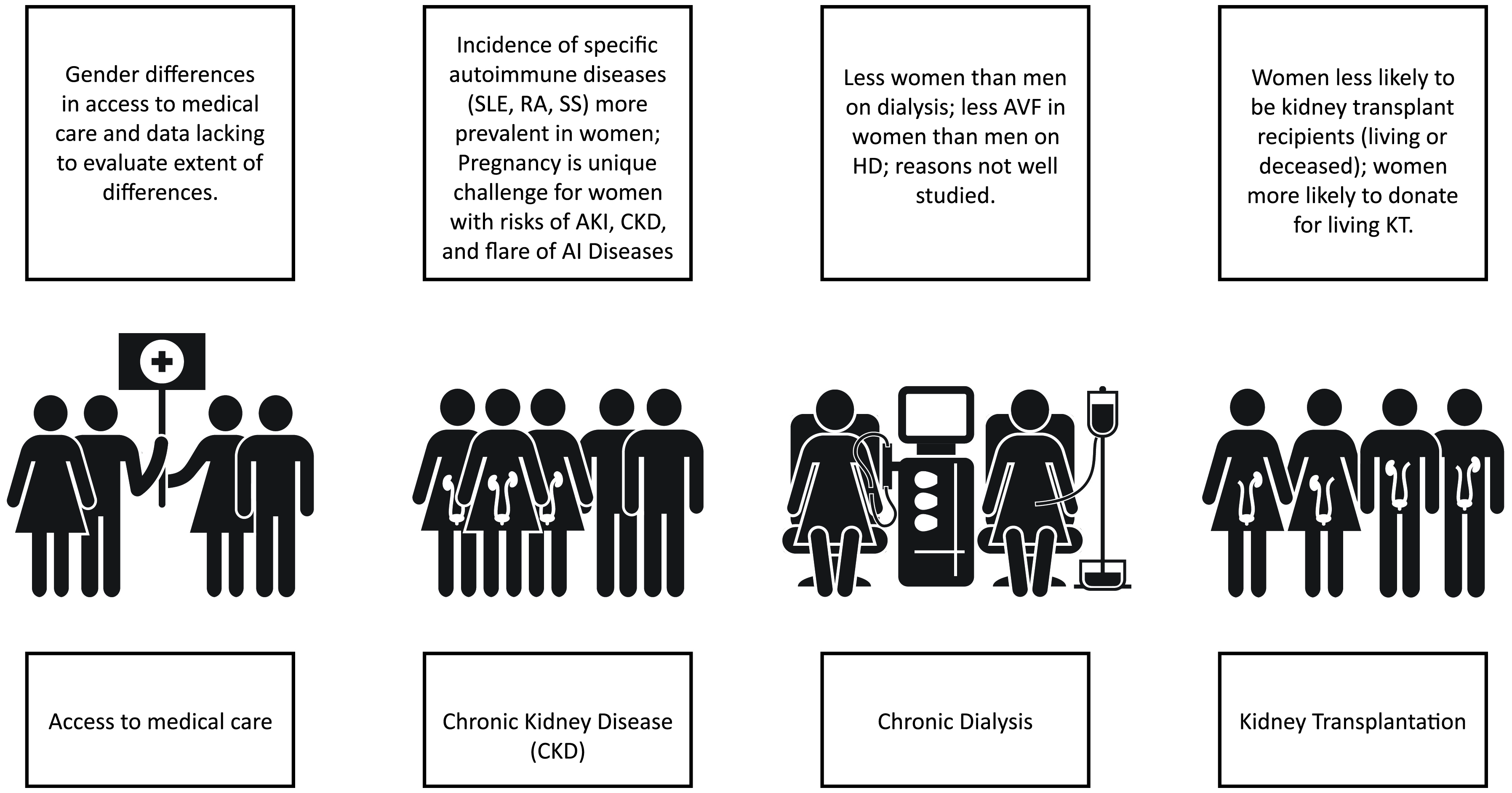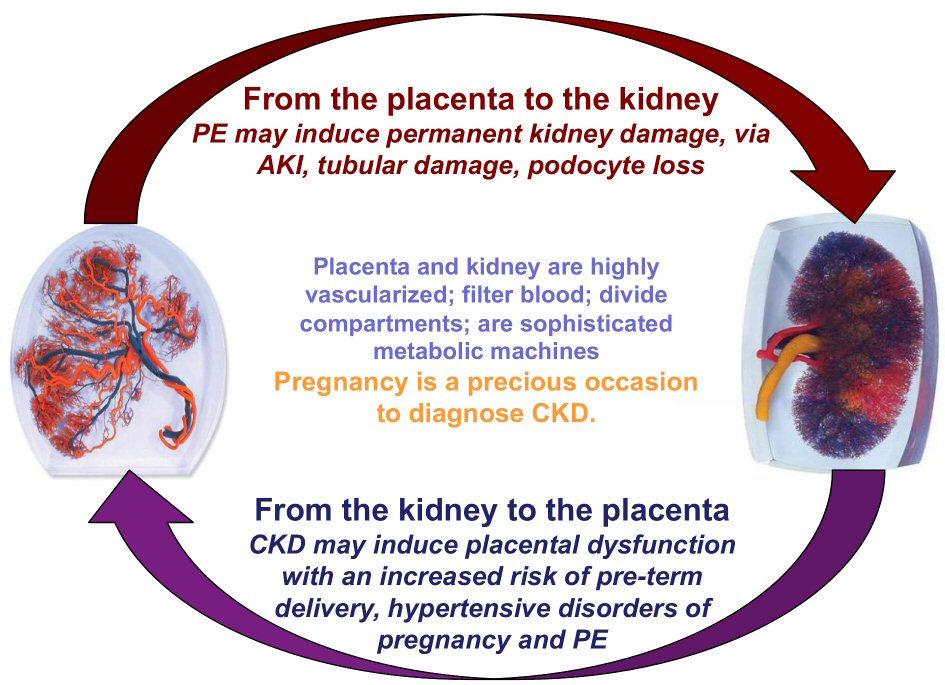| Maternal death | Death in pregnancy or within 1 week - 1 month postpartum | Too rare to be quantified, at least in highly resourced settings, where cases are in the setting of severe flares of immunologic diseases (SLE in primis). Still an issue in AKI; and in low resourced countries; not quantified in low-resourced countries, where it merges with dialysis need. |
| CKD progression | Decrease in GFR, rise in sCr, shift to a higher CKD stage | Differently assessed and estimated; may be linked to obstetric policy (anticipating delivery in the case of worsening of the kidney function); between 20% and 80% in advanced CKD. Probably not increased in early CKD stages. |
| Immunologic flares and neonatal SLE | Flares of immunologic diseases in pregnancy | Once thought to be increased in pregnancy, in particular in SLE, are probably risks in patients who start pregnancy with an active disease, or with a recent flare-up. Definition of a “safe” zone is not uniformly agreed; in quiescent, well controlled diseases do not appear to be increased with respect to non-pregnant, carefully-matched controls. |
| Transplant rejection | Acute rejection in pregnancy | Similar to SLE, rejection episodes are not increased with respect to matched controls; may be an issue in unplanned pregnancies, in unstable patients. |
| Abortion | Fetal loss, before 21 - 24 gestational weeks | May be increased in CKD, but data are scant. An issue in immunologic diseases (eventually, but not exclusively linked to the presence of LLAC) and in diabetic nephropathy. |
| Stillbirth | Delivery of a nonviable infant, after 21 - 24 gestational weeks | Probably not increased in early CKD, may be an issue in dialysis patients; when not linked to extreme prematurity, may specifically linked to SLE, immunologic diseases and diabetic nephropathy. |
| Perinatal death | Death within 1 week - 1 month from delivery | Usually a result of extreme prematurity, which bears a risk of respiratory distress, neonatal sepsis, cerebral hemorrhage. |
| Small, very small baby | A baby weighting < 2,500 - 1,500 g at birth | Has to be analyzed with respect to gestational age. |
| Preterm, early extremely preterm | Delivery before 37 - 34 or 28 completed gestational weeks | Increase in risk of preterm and early preterm delivery across CKD stages; extremely preterm may be an important issue in undiagnosed or late referred CKD and PE-AKI. |
| SGA (IUGR) | < 5th or < 10th centile for gestational age | Strictly and inversely related to pre-term delivery; SGA and IUGR are probably related to risk for hypertension, metabolic syndrome and CKD in adulthood. |
| Malformations | Any kind of malformations | Malformations are not increased in CKD patients not treated by teratogen drugs (MMF, mTor inhibitors, ACEi, ARBS); exception: diabetic nephropathy (attributed to diabetes); hereditary diseases, such as PKD, reflux nephropathy, CAKUT may be evident at birth. |
| Hereditary kidney diseases | Any kind of CKD | Several forms of CKD recognize a hereditary pattern or predisposition; besides PKD, reflux and CAKUT, Alport’s disease, IgA, kidney tubular disorders and mitochondrial diseases have a genetic background, usually evident in adulthood and not always clearly elucidated. |
| CKD - hypertension | Higher risk of hypertension and CKD in adulthood | Late maturation of nephrons results in a lower nephron number in preterm babies; the risks are probably higher in SGA-IUGR babies than in pre-term babies adequate for gestational age. |
| Other long-term issues | Developmental disorders | Mainly due to prematurity, cerebral hemorrhage or neonatal sepsis, are not specific of CKD, but is a threat in all preterm babies. |

